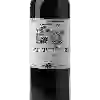
Winery Francois MartenotLes Chatonnières Beaujolais
In the mouth this red wine is a with a nice freshness.
This wine generally goes well with pork, poultry or veal.
Taste structure of the Les Chatonnières Beaujolais from the Winery Francois Martenot
Light | Bold | |
Smooth | Tannic | |
Dry | Sweet | |
Soft | Acidic |
In the mouth the Les Chatonnières Beaujolais of Winery Francois Martenot in the region of Beaujolais is a with a nice freshness.
Food and wine pairings with Les Chatonnières Beaujolais
Pairings that work perfectly with Les Chatonnières Beaujolais
Original food and wine pairings with Les Chatonnières Beaujolais
The Les Chatonnières Beaujolais of Winery Francois Martenot matches generally quite well with dishes of pasta, veal or pork such as recipes of makroud, bacon and mushroom tagliatelle or stuffed potatoes.
Details and technical informations about Winery Francois Martenot's Les Chatonnières Beaujolais.
Discover the grape variety: Pinotin
Swiss interspecific cross obtained in 1991 by Valentin Blattner. The parents would be pinot noir and an interspecific variety resistant to diseases and, for others, it would be a cross between cabernet-sauvignon and ((sylvaner x riesling) x (12 417 Seyve-Villard x 7053 Seibel)) see graph www.winogrona.org. No resistance gene could be identified for either mildew or powdery mildew. It can be found in Switzerland, Belgium, Holland, Germany, ... still little known in France.
Informations about the Winery Francois Martenot
The Winery Francois Martenot is one of of the world's great estates. It offers 155 wines for sale in the of Beaujolais to come and discover on site or to buy online.
The wine region of Beaujolais
Beaujolais is an important wine region in eastern France, famous for its vibrant, Fruity red wines made from Gamay. It is located immediately South of Burgundy, of which it is sometimes considered a Part, although it is in the administrative region of Rhône. The extensive plantings of Gamay in this region make Beaujolais one of the few regions in the world that is so concentrated on a single Grape variety. Pinot Noir is used in small quantities in red and rosé wines, but in the name of regional identity, it is being phased out and will only be allowed until the 2015 harvest.
The word of the wine: Acescence
An alteration in wine also known as pitting (hence the expression piqué wine), due to the presence of acetic acid and ethyl acetate, and characterized by a vinegar-like odor.














